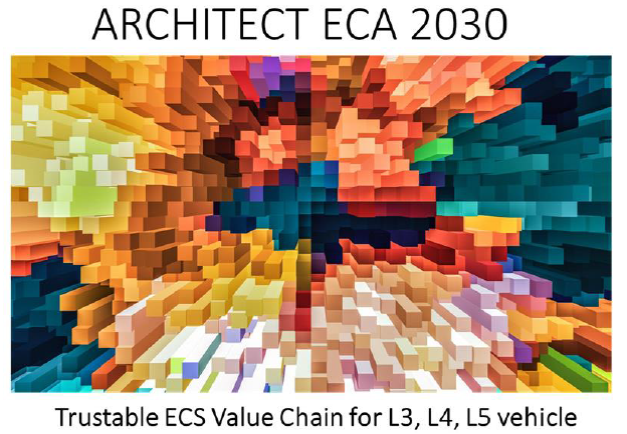ArchitectECA2030
Automation is seen as one of the key technologies that considerably will shape our society and will sustainably influence future mobility and our quality of life. In order to take full advantage of automation, connected and automated vehicles (CAVs) need to be trustworthy. This requires safety, security, and reliability by design and during operation even if hardware and software of the four crucial elements (perception, brain, propulsion, connectivity) is reconfigured. Consequently, there is a strong need for an independent and reproducible validation of automated vehicles even though we have to deal with stochastic quantities.

Objectives
The overall key targets of ArchitectECA2030 are the robust mission-validated traceable design of electronic components and systems (ECS), the quantification of an accepted residual risk of ECS for CAVs to enable type approval, and an increased end-user acceptance due to more reliable and robust ECS. The proposed methods include but are not limited to accelerated testing, residual risk quantification, virtual testing and multi-physical and stochastic simulations, pilot testing. To guarantee safety along the ECS value chain, ArchitectECA2030 will implement a unique in-vehicle monitoring device which is able to measure the health status and degradations of the functional electronics empowering model-based prediction, fault diagnosis, predictive maintenance, and anomaly detection. Furthermore, a widely agreed homologation framework comprised of harmonised methods and tools able to handle dynamic adoptions to ultimately design safe, secure, and reliable CAVs with a well-defined, quantified, and acceptable residual risk across all ECS levels will be developed. The residual risk relies on the failure risks of each single semiconductor, electronic component, subsystem, and system.
Project consortium
ArchitectECA2030 will bring together the representative stakeholders from ECS industry, standardization and certification bodies (ISO, NIST, Tuev), test field operators, insurance companies, and academia in tight interaction with the lighthouse initiative Mobility.E to influence emerging standards and homologation procedures for CAVs.
Further Information:
- This project is led by Infineon Technologies AG
- Website
Contact
The Architect ECA 2030 project project is funded by European Union under the ECSEL Joint Undertaking call as an Innovation Action.